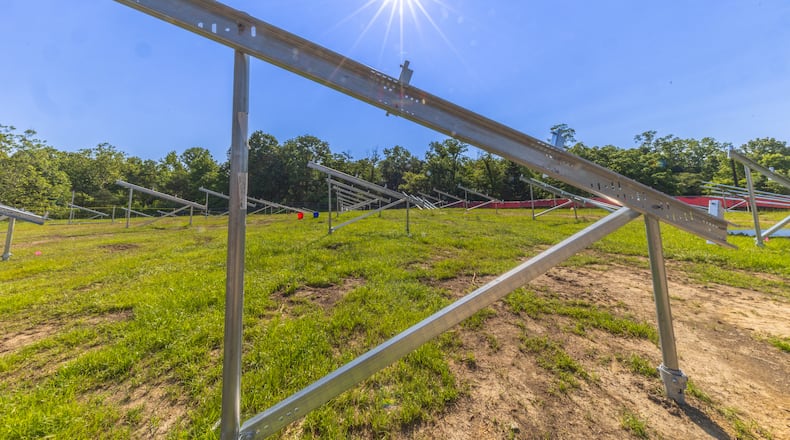The more than 3,000 solar panels, which are being installed at the site of the former Thomson Hall will by the late fall semester connect to Miami’s already extensive underground geo-thermal heating and cooling system to help save money on the university’s energy costs, said school officials.
“When finished, the arrays are expected to have a peak capacity of just under 2 megawatts,” said Cody Powell, associate vice president of facilities, operation, and planning for Miami.
The $5 million project was unveiled with a ceremony in September 2024 and heralded as the latest cornerstone in Miami’s decades-long strategy to reduce energy costs by switching away from fossil fuel sources.
During last year’s public ceremony, Miami President Gregory Crawford heralded the coming solar field, which will be combined with a park walkway and garden setting, as the school’s largest solar-power project ever and one that will “leapfrog us forward on our next big step.”
“More than a decade ago we decided to start on a sustainability path and invest in geothermal technology and since then we have already reduced our carbon footprint by more than 50%,” said Crawford.
Once built, the hybrid solar energy and conservation area will be the first of its kind in Miami’s history.
Powell recently said Miami has “has successfully reduced operating costs and avoided substantial increases in utilities through our conversion to geothermal.”
“The solar field project also aligns with these same goals. Clearly, installation of solar capacity is meaningful in reducing carbon for our campus, but it will also play an important role in managing our cost of electricity,” he said.
About the Author

